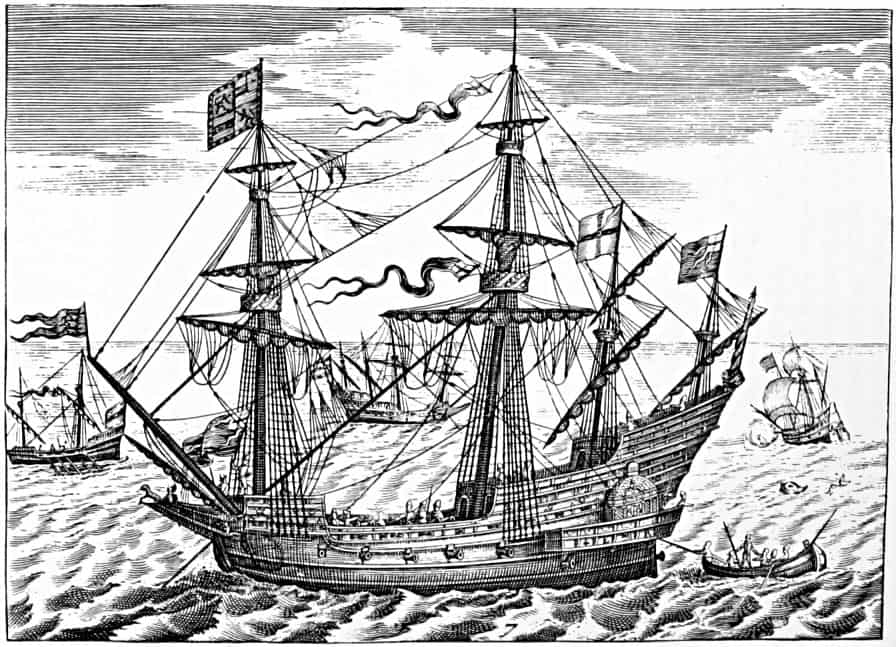Pandemics In History 1: ‘Shipping’ The Virus

The day Satyanagar, where I stay, was sealed on April 8, 2020, I waited with bated breath at the stroke of 4.30PM to listen to Government Chief Spokesperson Subroto Bagchi speak about the infection in Satyanagar. He made no mention of that but mentioned that currently 210 countries and 2 ships were infected. The virus had come home, and it had got all my attention. But in a few hours, I had nothing new to speculate about Satyanagar. The mention of ships, however, as independent of nations, intrigued me. And I knew nothing about the virus outbreaks on ships.
I found that cruise ships occupied a unique geopolitical position and operated as independent entities not subject to the laws of any country. When it docked in any port, it was bound by the laws of that country. And this led me to Diamond Princess, the cruise ship, which had accounted for more than half of the infections around the world outside of China by February 20, according to WHO.

(Photo courtesy: https://www.travelweekly.com/Cruise/Princess-Cruises/Diamond-Princess)
With over 3700 people including passengers and crew, the ship had sailed from Yokohama on January 20 on a 2-week roundtrip and just before the ship was to dock at Yokohama again, a passenger was diagnosed with coronavirus. The ship was then quarantined for about a month. By now, 712 of them have tested positive and 12 have died. In fact, over 20 cruise ships have been infected, and nearly 5000 passengers still remain at sea. The pandemic spread to a number of military ships also and on USS Theodore Roosevelt, 550 crew members have tested positive and 1 died.
Ships have been particularly vulnerable as a large number of people stay in enclosed spaces. The ship’s ventilation, which relies on re-circulated air, also spreads virus particles from room to room. Cruise ships are particularly vulnerable as they are designed to engage the passengers in communal activities like shows, buffets, dances and group activities since the passengers cannot go anywhere else.
Moreover, the fact that people from many countries are brought close together for many days facilitate the transmission of infections. The ships also stop at multiple ports, where passengers interact with locals. And the cruise industry has traditionally attracted the older generation as they have more leisure and disposable income. Crew members were a major source of infection as they carried food to each room and possibly picked up or transmitted the infection. Moreover, they stayed in crowded quarters and continue on multiple trips or are transferred to other ships.
But ships, it seems, have always played a significant role in pandemics in history. After all, as many of us now know, the word ‘quarantine’, was first used in the 14th century for ships that were made to wait for 40 days outside Venice before passengers were allowed to disembark. This is because the bubonic plague, which had wiped out about a third of Europe and a much of Asia, was supposed to have a 37-day period from infection to death. Hence, it was assumed that anyone healthy after 40 days was safe from infecting others.

(Photo courtesy: https://historycollection.co/shrouded-mystery-6-myths-black-death/6/)
The Black Death arrived in Europe in October 1347 when 12 ships from the Black Sea docked at the Italian port of Messina. They were called death ships as most sailors aboard were dead or almost dead. The plague moved from the ports to land and to other ports. In 5 years, the plague would kill more than 20 million people in Europe alone.
Ships have historically been seen as the transporters of pandemics, when diseases travel across geographies as they have been used for international trade. The voyages of Christopher Columbus and others led to decimation of entire indigenous populations in the Americas with the spread of small pox, measles and the plague, which were foreign to the natives. This story continued till the 20th century with most pandemics. That is because the ships carried the rats that carried the plague. Therefore, elaborate protocols were followed earlier to ensure that ships were rid of rats.
The 21st century pandemics such as SARS and MERS unlike the plague were not spread by rats or rat flea, and air travel played a significant role in the transport of infectious diseases. At the same time, COVID-19 has brought the attention back to ships as they accounted for the first horror story of the epidemic outside China.
(A longer version of the article can be read at toldunderthebakultree.wordpress.com)

Comments are closed.